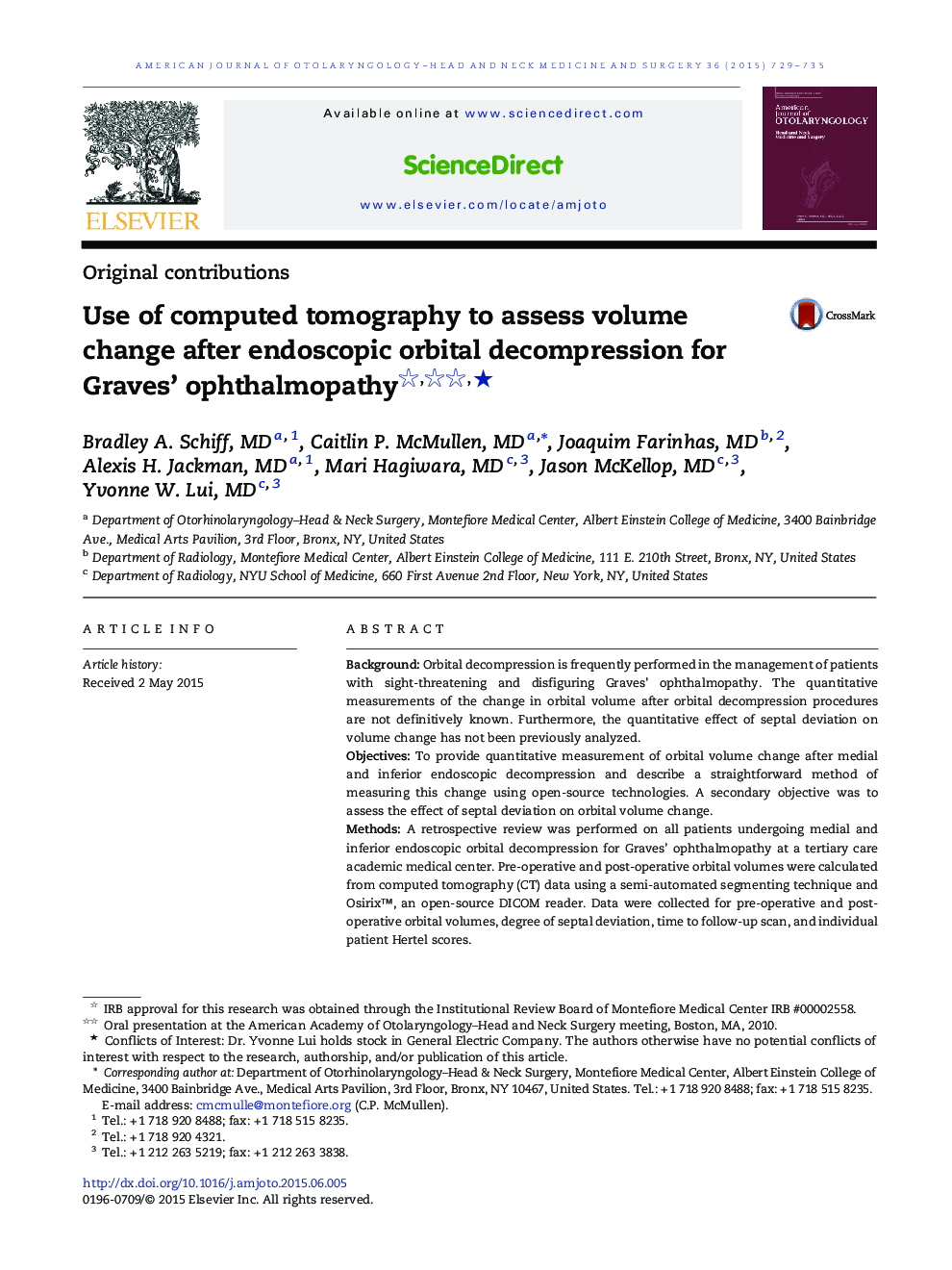| کد مقاله | کد نشریه | سال انتشار | مقاله انگلیسی | نسخه تمام متن |
|---|---|---|---|---|
| 4103272 | 1605234 | 2015 | 7 صفحه PDF | دانلود رایگان |
BackgroundOrbital decompression is frequently performed in the management of patients with sight-threatening and disfiguring Graves' ophthalmopathy. The quantitative measurements of the change in orbital volume after orbital decompression procedures are not definitively known. Furthermore, the quantitative effect of septal deviation on volume change has not been previously analyzed.ObjectivesTo provide quantitative measurement of orbital volume change after medial and inferior endoscopic decompression and describe a straightforward method of measuring this change using open-source technologies. A secondary objective was to assess the effect of septal deviation on orbital volume change.MethodsA retrospective review was performed on all patients undergoing medial and inferior endoscopic orbital decompression for Graves' ophthalmopathy at a tertiary care academic medical center. Pre-operative and post-operative orbital volumes were calculated from computed tomography (CT) data using a semi-automated segmenting technique and Osirix™, an open-source DICOM reader. Data were collected for pre-operative and post-operative orbital volumes, degree of septal deviation, time to follow-up scan, and individual patient Hertel scores.ResultsNine patients (12 orbits) were imaged before and after decompression. Mean pre-operative orbital volume was 26.99 cm3 (SD = 2.86 cm3). Mean post-operative volume was 33.07 cm3 (SD = 3.96 cm3). The mean change in volume was 6.08 cm3 (SD = 2.31 cm3). The mean change in Hertel score was 4.83 (SD = 0.75). Regression analysis of change in volume versus follow-up time to imaging indicates that follow-up time to imaging has little effect on change in volume (R = − 0.2), and overall mean maximal septal deviation toward the operative side was − 0.5 mm. Negative values were attributed to deviation away form the operative site. A significant correlation was demonstrated between change in orbital volume and septal deviation distance site (R = 0.66), as well as between change in orbital volume and septal deviation angle (R = 0.67). Greater volume changes were associated with greater degree of septal deviation away from the surgical site, whereas smaller volume changes were associated with greater degree of septal deviation toward the surgical site.ConclusionA straightforward, semi-automated segmenting technique for measuring change in volume following endoscopic orbital decompression is described. This method proved useful in determining that a mean increase of approximately 6 cm in volume was achieved in this group of patients undergoing medial and inferior orbital decompression. Septal deviation appears to have an effect on the surgical outcome and should be considered during operative planning.
Journal: American Journal of Otolaryngology - Volume 36, Issue 6, November–December 2015, Pages 729–735
